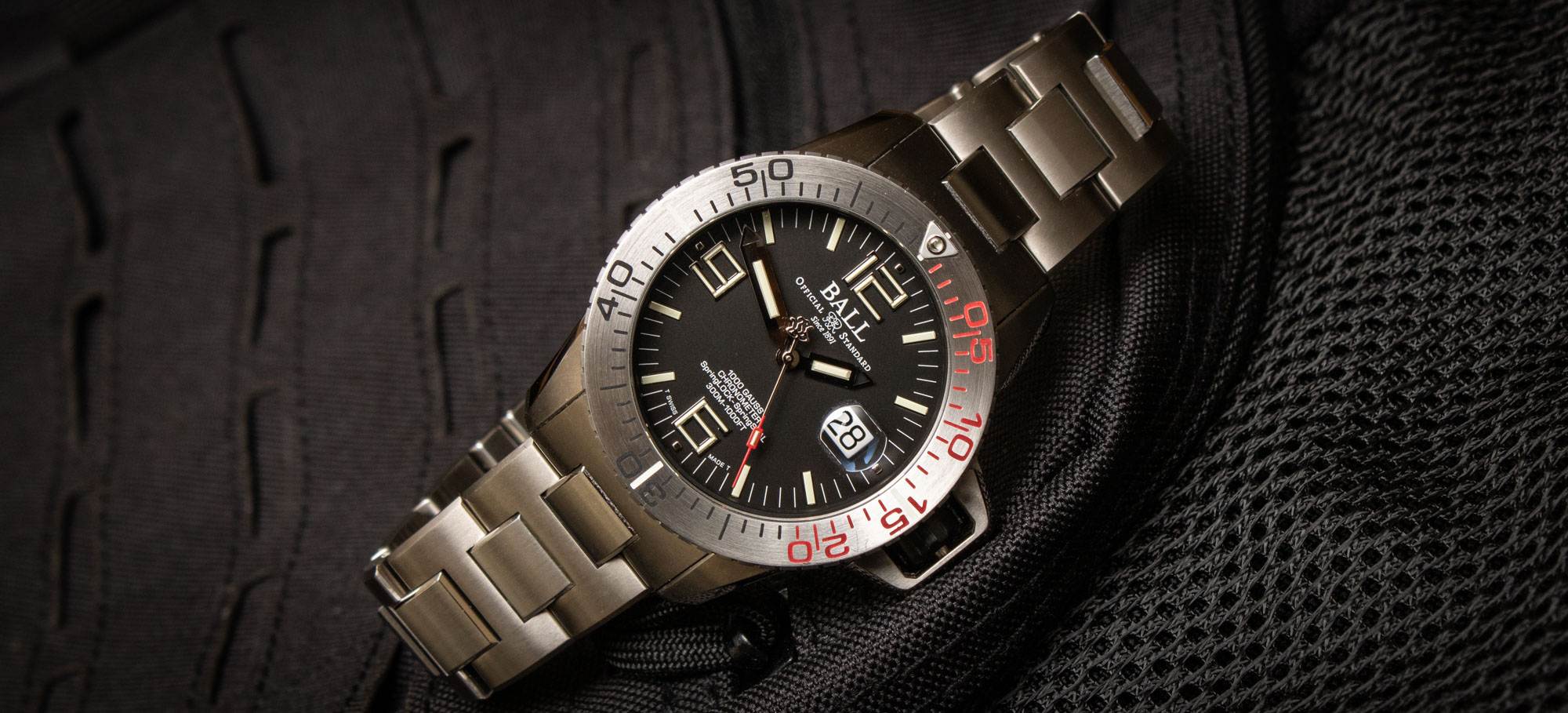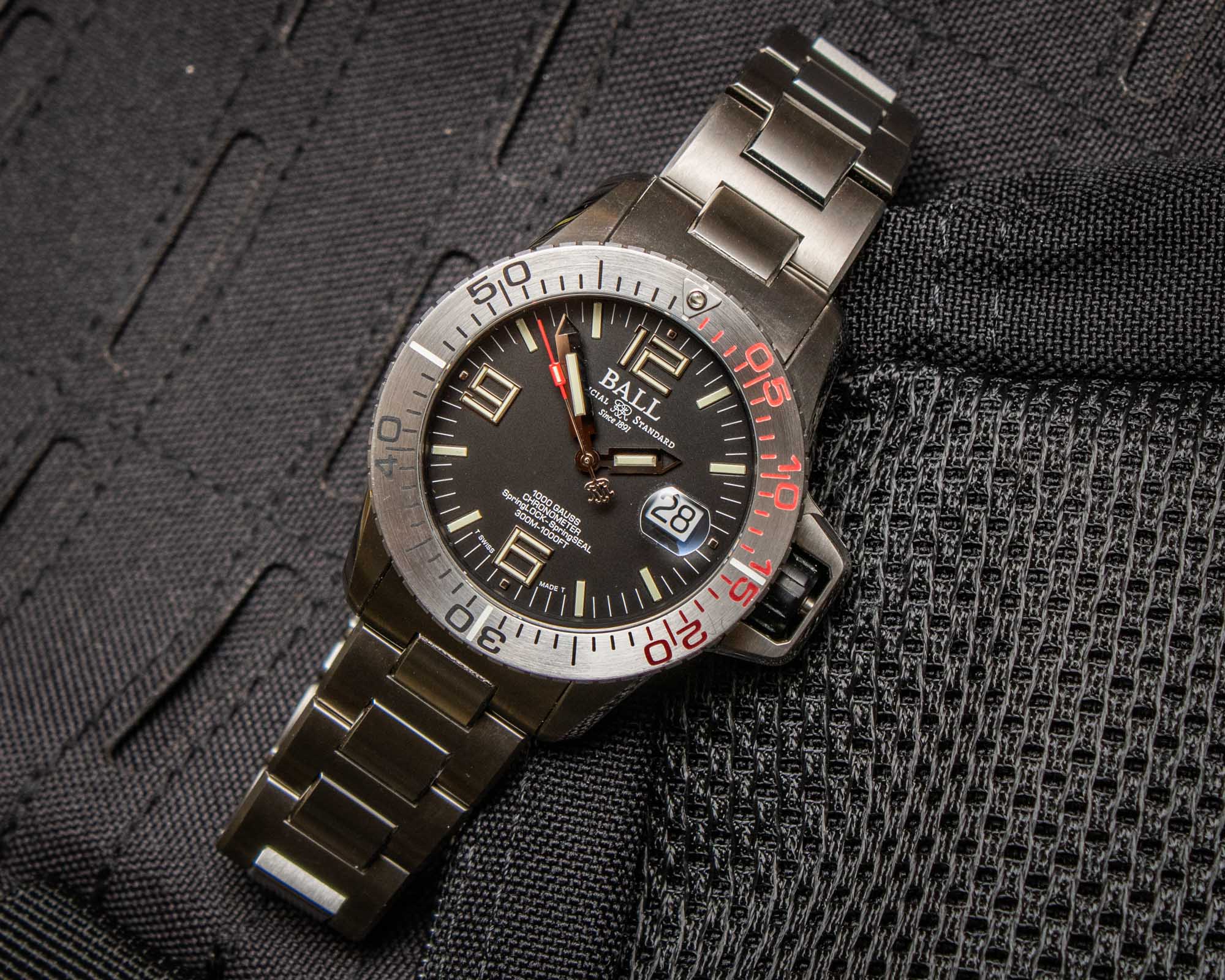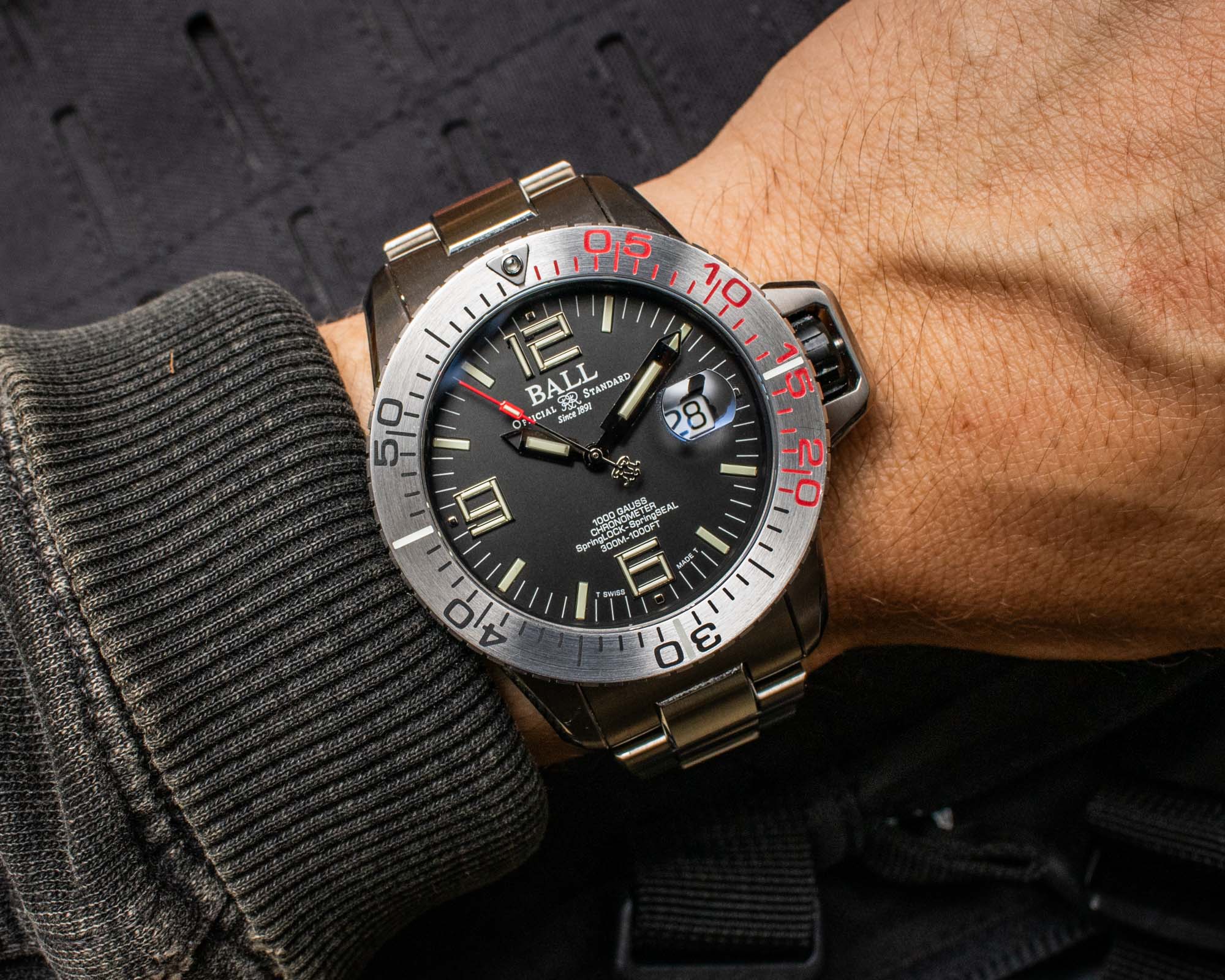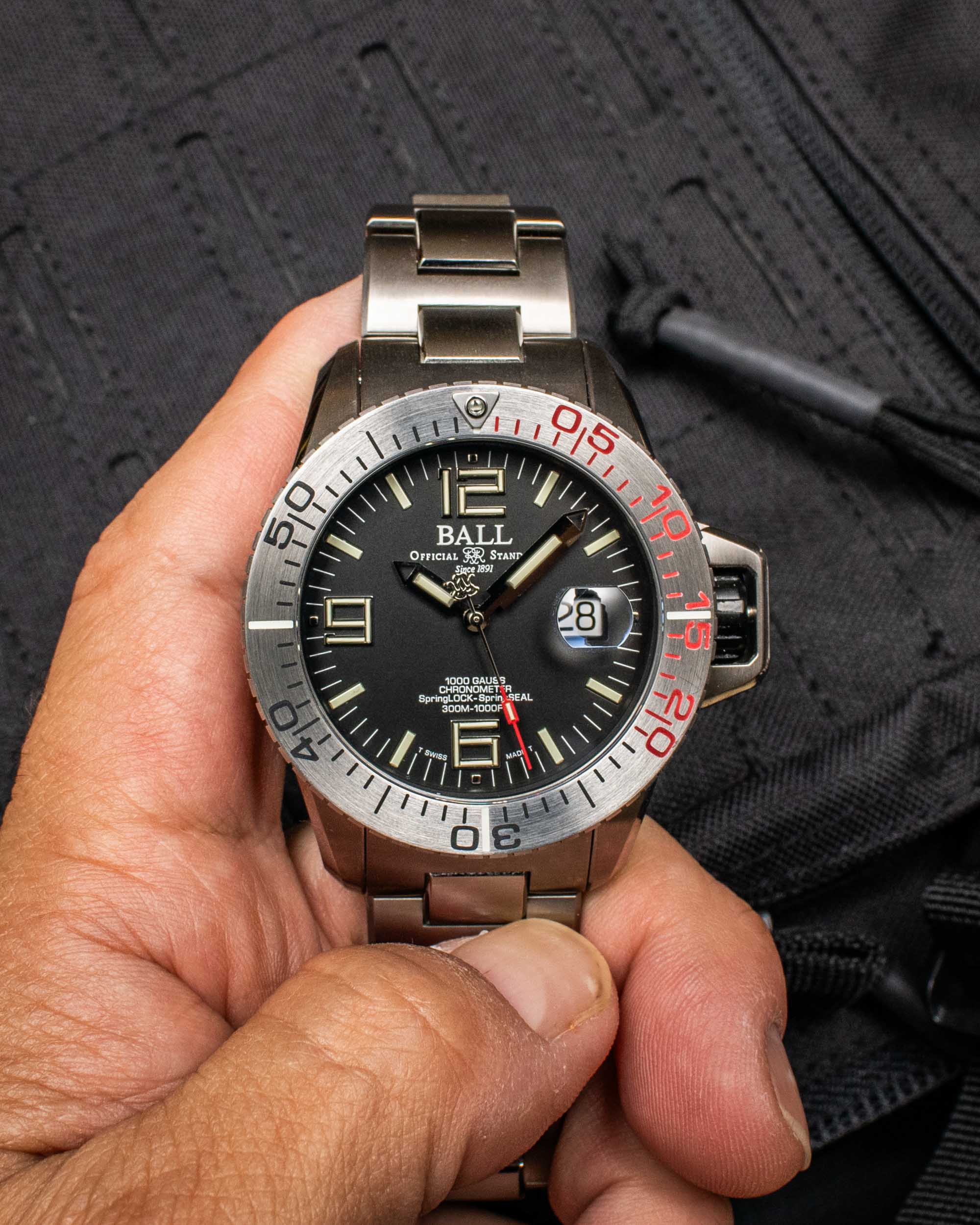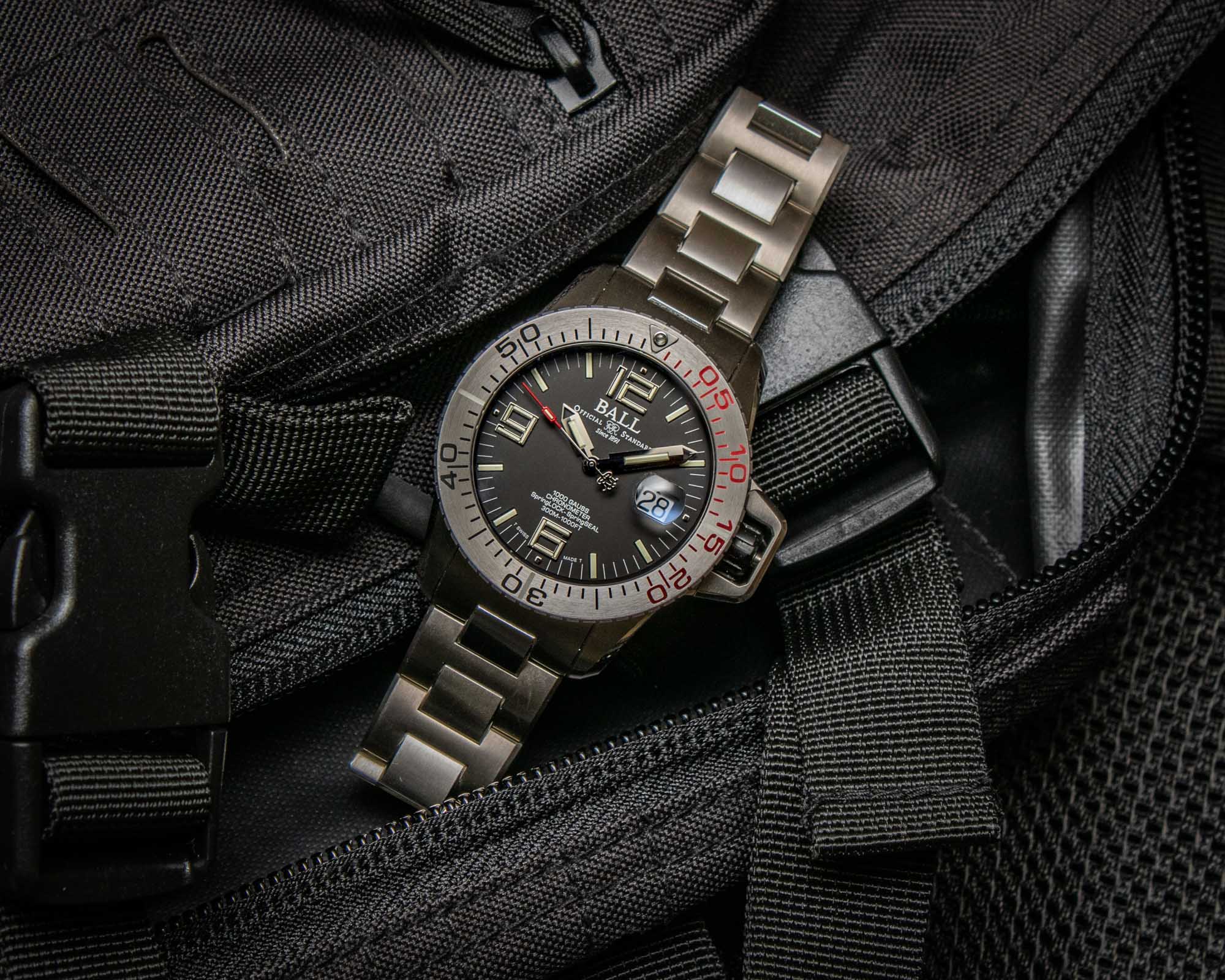
The three main enemies of wristwatches have always been moisture, magnetism, and impact — and for decades, manufactures have worked to create timepieces that are increasingly resistant to these forces. Although we now have watches that are virtually impervious to magnetism and quite literally capable of venturing to the bottom of the ocean, shock resistance remains one area where substantial gains can still be made, and many watches that are otherwise incredibly durable will still suffer damage if they are dropped onto a hard surface. As one of its latest new releases of 2023, Ball has created a timepiece designed for the United States Navy Explosive Ordnance Disposal unit, and this new ultra-resilient model is the most durable mechanical watch that the Swiss brand has ever put forward. Water resistant to 300 meters and antimagnetic to 1,000 gauss, the new Ball Engineer Hydrocarbon EOD also incorporates several innovations that enable it to survive a ten-meter free fall with a shock resistance rating of 50,000Gs.
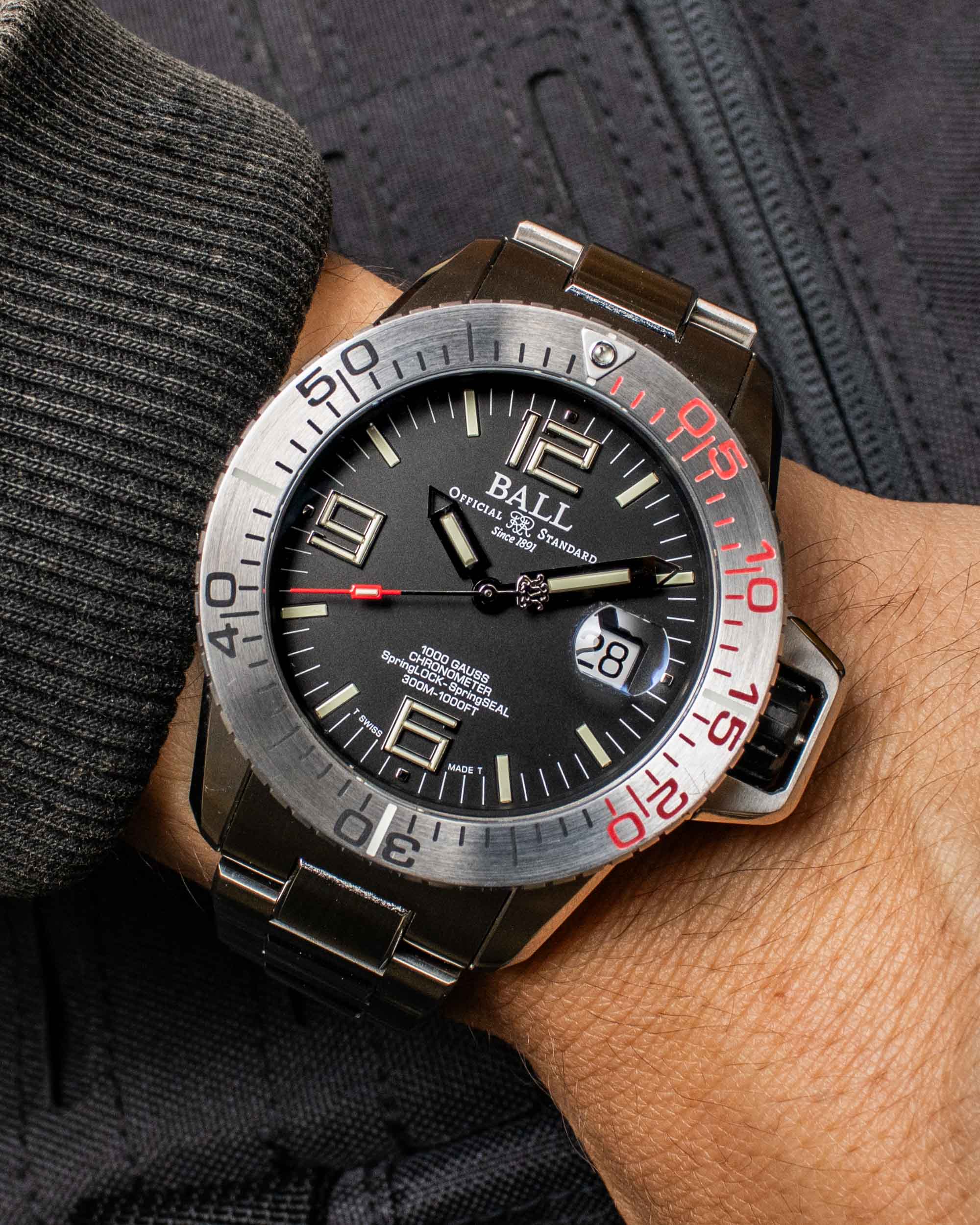
In many ways, the new Ball Engineer Hydrocarbon EOD could be seen as a more capable evolution of the brand’s Engineer Hydrocarbon DEVGRU watch from 2017, which featured a similar shock-resistant case structure but was less equipped to contend with water and magnetism. Now based upon a dive watch platform with a 120-click unidirectional rotating timing bezel and an internal antimagnetic shield, the new Engineer Hydrocarbon EOD sees its water resistance increase from 100 meters up to 300 meters, while its resistance to magnetism goes from 4,800A/m (approximately 60 gauss) all the way up to 1,000 gauss. At the time of launch, the new Engineer Hydrocarbon EOD makes its debut appearance in two configurations, with the only differences between them being their bezels and seconds hands. The first of the two models features an entirely polished handset with a bezel that has a black ceramic insert, while the other version (featured here) has a steel bezel with red and black markings, along with a seconds hand that has a matching red-finished tip.
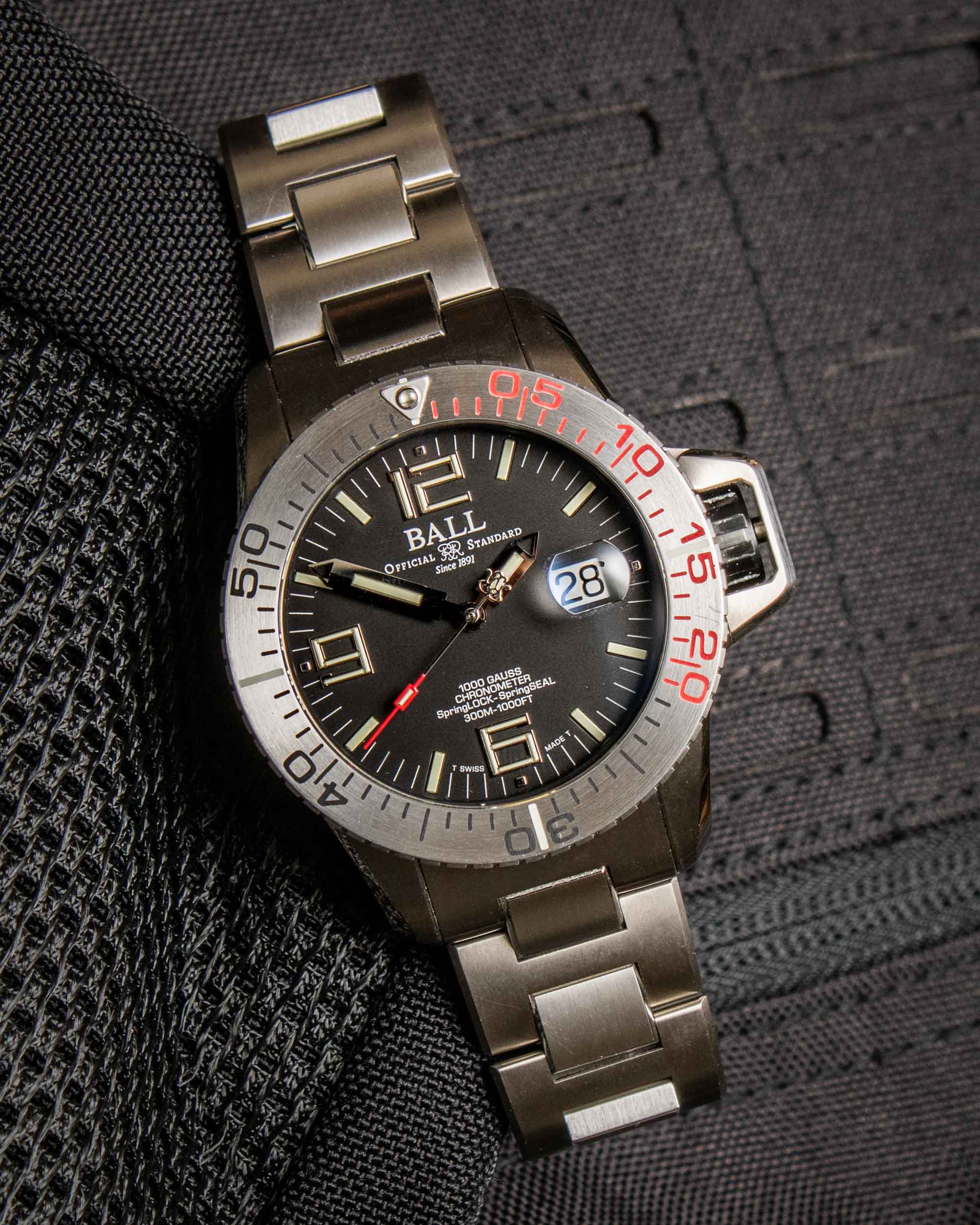
Fitted with a flat anti-reflective sapphire crystal that has a magnifier bubble above the date, the case of the Ball Engineer Hydrocarbon EOD is crafted from titanium and measures 42mm in diameter by approximately 53.2mm lug to lug, although the bezel sticks out slightly past the edges of the case to bring the overall width of the watch up to 43mm. In that same spirit, Ball lists the thickness of the Engineer Hydrocarbon EOD at 13.7mm; however, the top of the bezel features a slightly concave profile with raised edges that stick up above the rim of the crystal to offer additional protection against impacts. Consequently, this brings the overall height of the Ball Engineer Hydrocarbon EOD up to approximately 14.5mm when measured from the upper rim of its bezel to the highest point of the U.S. Navy Explosive Ordnance Disposal emblem that adorns its solid screw-down caseback.
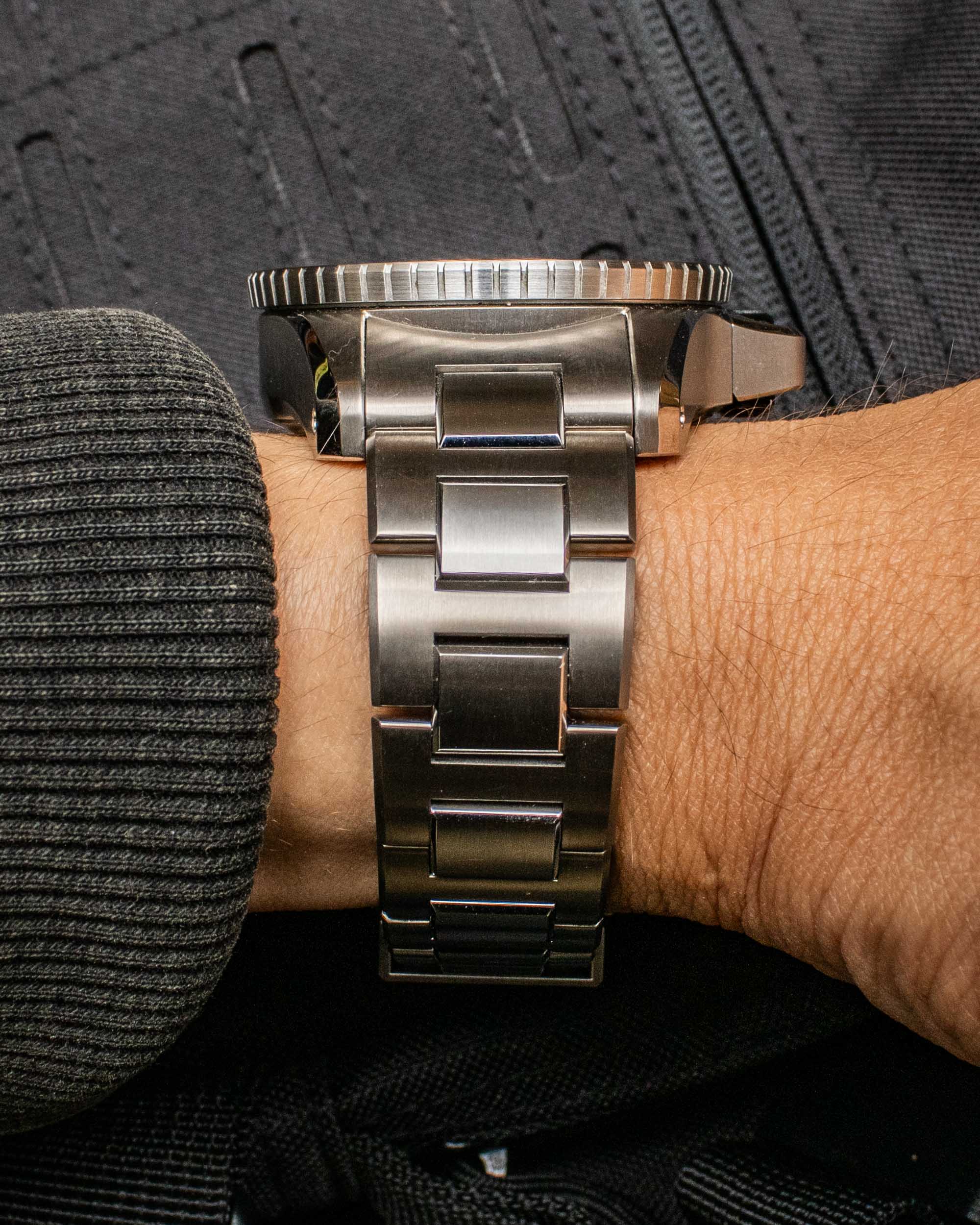
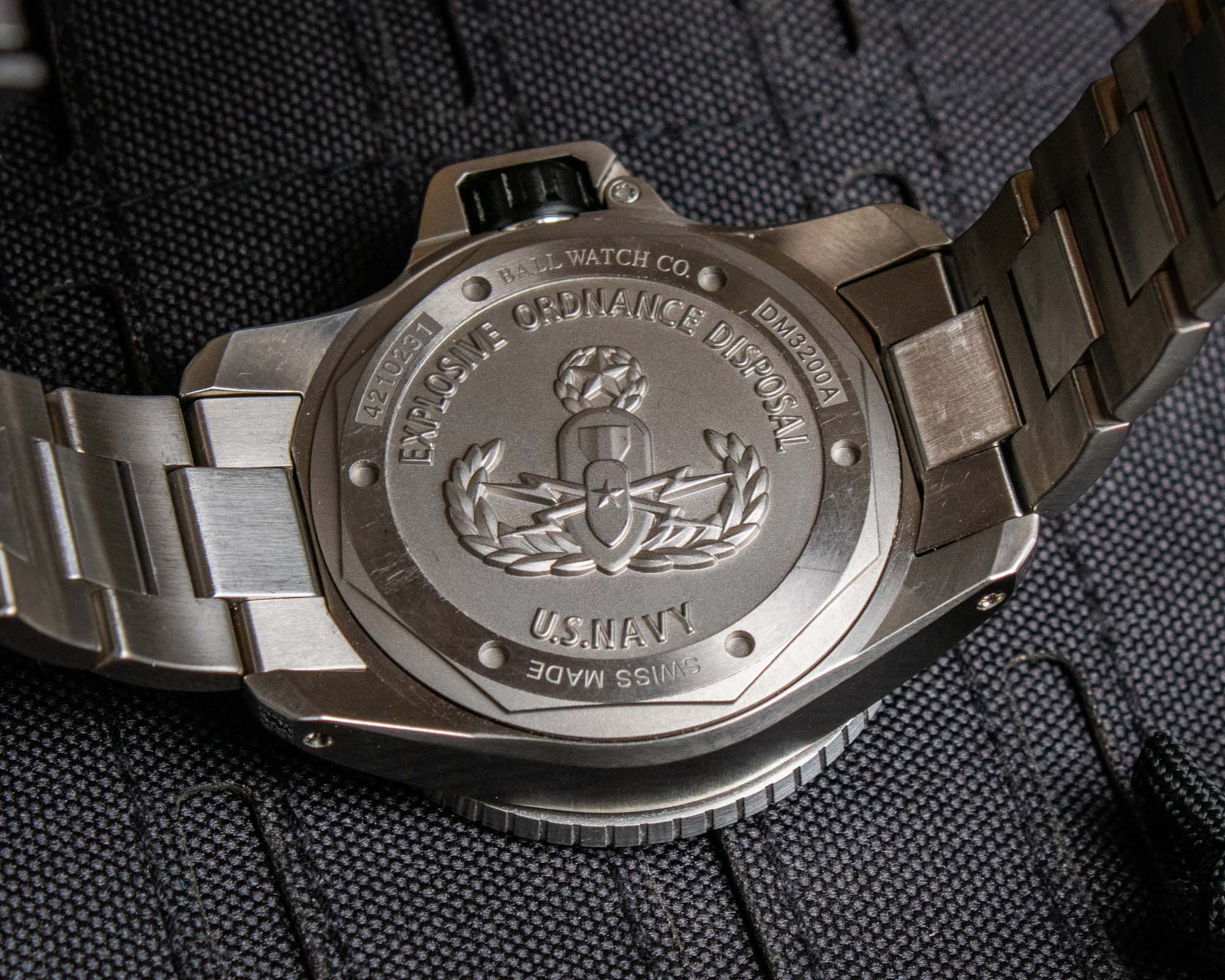
Similar to the Engineer Hydrocarbon DEVGRU model from 2017, the right-hand side of the case features a large crown-protector bridge to shield the winding crown from direct impacts. The crown itself is a simple push-pull piece; however, it is completely covered by a black screw-down cap that is attached to the hinged bridge that swings down over the top of it. Unscrewing the black cap from the middle case unlocks the bridge, which can then be pivoted upwards to expose the internal crown. Once the time or date has been set, the protector bridge can be rotated back over the crown, and screwing the black cap down will lock the assembly to the middle case. While the bridge itself is the primary source of the crown’s protection, the additional cap covering the crown guarantees that no impact can directly strike the actual winding crown and be transferred via the stem to the internal movement.
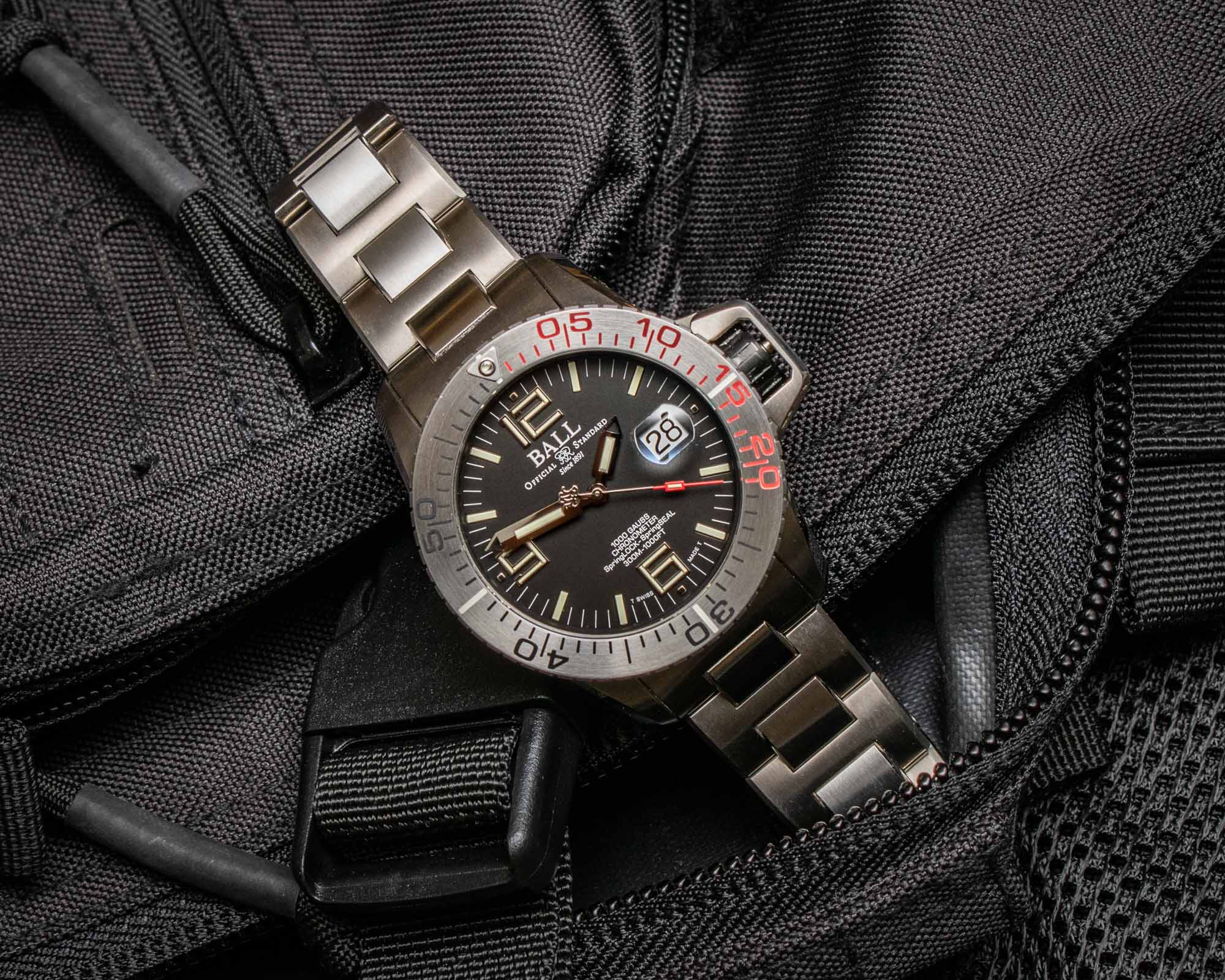
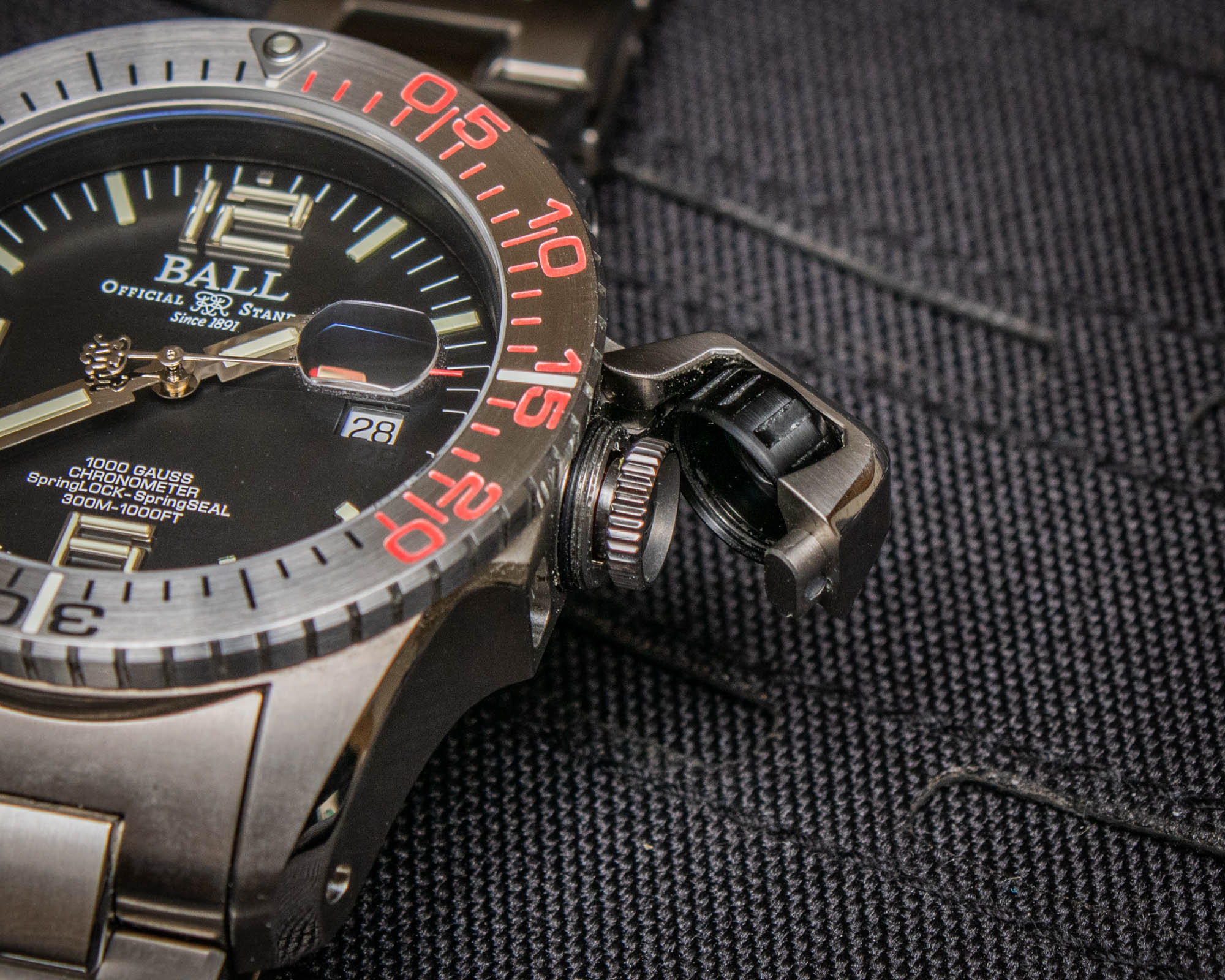
The other reason this crown protector setup is beneficial is because it allows the internals of the watch to be fully suspended within the case, and this is a large part of how the Ball Engineer Hydrocarbon EOD is able to achieve its impressive shock resistance. An elastomer ring surrounds the dial, hands, and movement to act as a suspension system, and this allows the internals to slightly move within the case, with the elastomer bumper absorbing the bulk of the forces from impacts. With a traditional screw-down crown, the internals would still be fixed to the outer case by the stem, and the outer screw-down cap on the Ball Engineer Hydrocarbon EOD enables the internals (including the crown) to be fully mobile within the middle case. When you pull out the internal crown to set the time, you can actually see the dial and hands slightly shift under the crystal, and this ability to move ultimately prevents the forces exerted on the outside of the watch from being transferred to the internal movement.

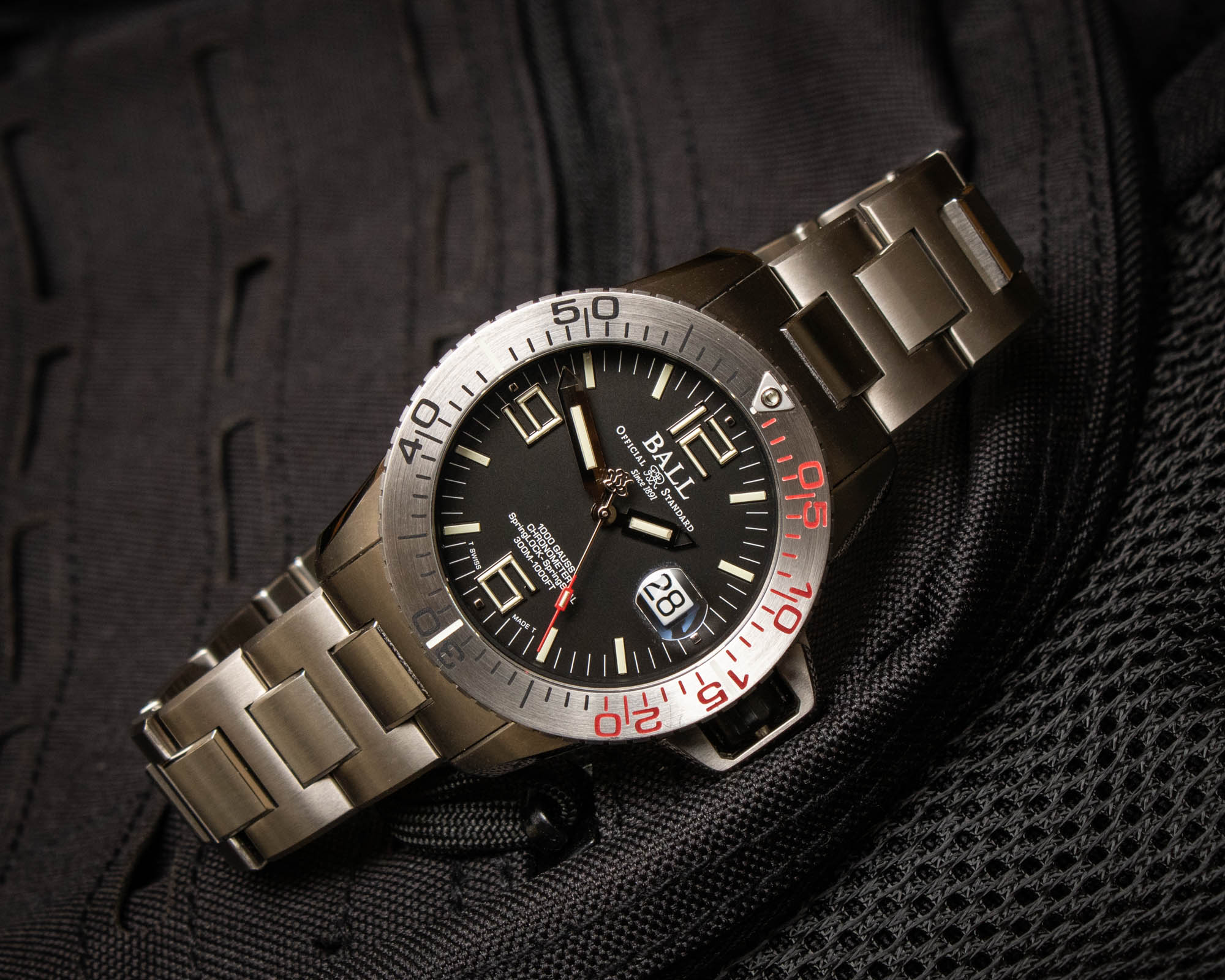
The other two technologies that help the new Ball Engineer Hydrocarbon EOD achieve its impressive 50,000Gs of shock resistance both relate to its movement. The Ball Caliber RR1101-CSL is based upon the core design of the ETA 2892 and therefore runs at a frequency of 28,800vph (4 Hz) with a power reserve of approximately 42 hours. However, in addition to being a COSC-certified chronometer and using special lubricants that allow it to run accurately from -49° to 176° Fahrenheit, the Ball Cal. RR1101-CSL also includes the brand’s SpringLOCK and SpringSEAL technologies for increased resistance to impacts. SpringLOCK is essentially a cage that covers the balance spring to limit the unfurling of its coils in the event of strong shocks, while SpringSEAL protects the regulator assembly and ensures that it does not get knocked out of place. Between these two technologies and the elastomer guard surrounding the movement, the new Ball Engineer Hydrocarbon EOD is capable of surviving a ten-meter free fall, which means that it should be entirely unbothered by daily bumps or taking a tumble from your nightstand.
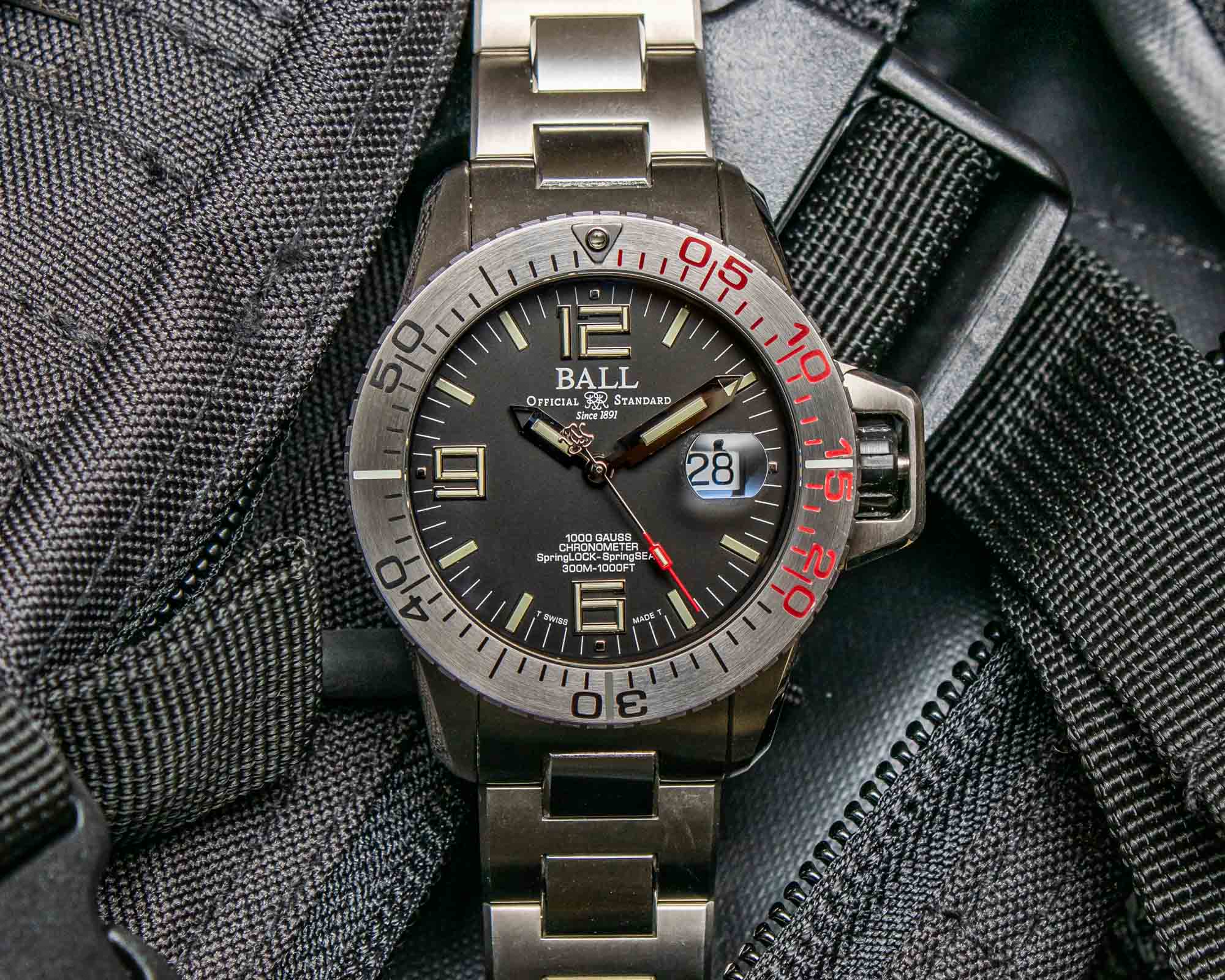
As for the dial of the Ball Engineer Hydrocarbon EOD, it features a matte black surface with white text, a date window at 3 o’clock, and luminous tritium gas-filled tubes serving as the hour markers. The large 6-9-12 numerals have glowing tritium tubes set into their surfaces to create outlines of the numbers, while wider tritium tubes are used to represent the baton-style indexes that reside between them. The extra-wide set of sword-shaped hands also receives luminous tritium tubes to match the hour markers, while the seconds hand has a counterweight that appears in the shape of Ball’s logo. For superior low-light contrast, the tritium tubes that form the 12 o’clock marker glow orange, while the rest of the tubes all glow green, and a similar dual-color lume approach is used for the bezel. A green-glowing tritium tube is embedded at the zero marker, although all of the other markings on the bezel are also luminous, with the red section of the elapsed-time scale glowing orange, while the rest of the bezel markings emit a green-colored glow when viewed in the dark.
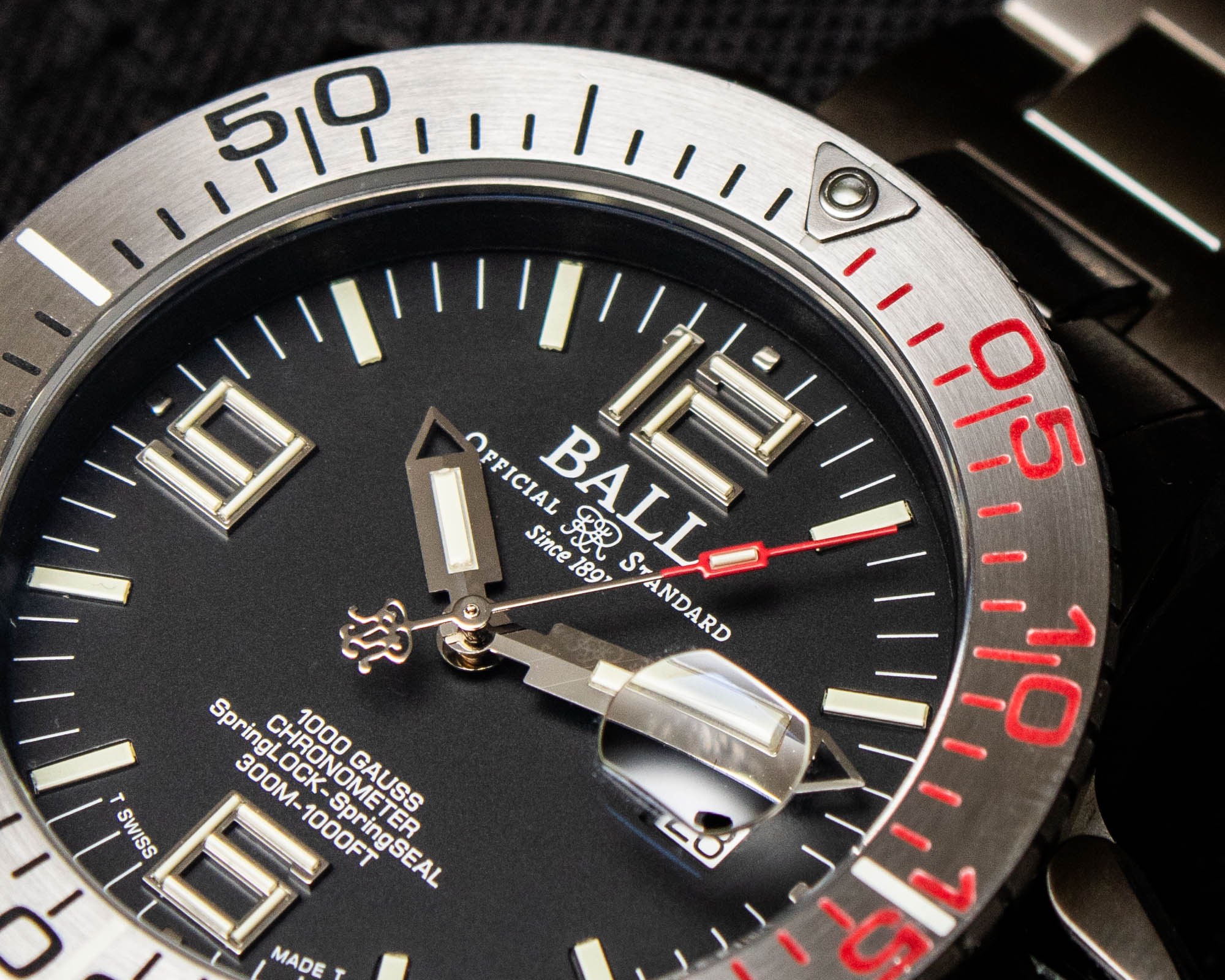

The alternate version of the Engineer Hydrocarbon EOD that is fitted with a black ceramic bezel insert has bezel markings that all glow green, although I do want to quickly note one small discrepancy between the example of the Ball Engineer Hydrocarbon EOD that is featured in this article versus the images of the watch as it appears on the brand’s website. The only orange-glowing tritium tubes on this particular example are located at the 12 o’clock marker; however, on Ball’s official website, the images of both versions depict the watch with all of its cardinal points and hands glowing orange. This inconsistency is more than likely due to the watch shown here being a pre-production media sample, and I would assume that buyers of the Engineer Hydrocarbon EOD will receive their watches in the configuration that appears on the brand’s website with additional orange-glowing tritium tubes on the hands and dial.
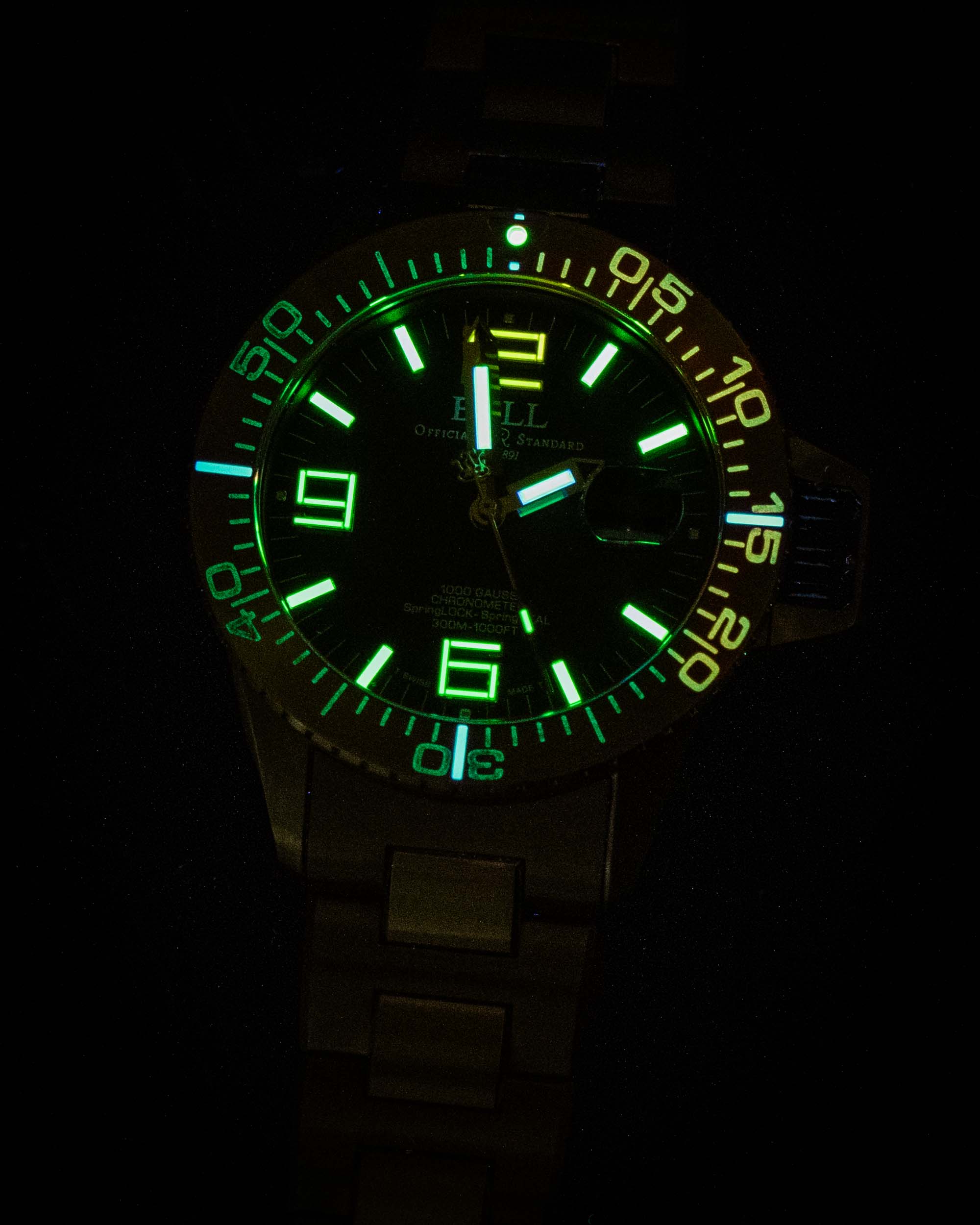
The lugs of the Ball Engineer Hydrocarbon EOD are set 21mm apart, and they feature polished bevels that offer a small touch of refinement against the otherwise entirely brushed surfaces of its case. Additionally, while the lugs themselves feature drilled holes, this is hardly done to facilitate strap changes, and the end-links of the bracelet are secured to the case with screws in order to create a more robust point of connection. As for the bracelet itself, it features an H-link design with completely solid components and single-sided screws for the removable links; however, because it is constructed from both titanium and stainless steel, the included bracelet makes the Ball Hydrocarbon EOD surprisingly heavy compared to other titanium watches of a similar case size. The links of the bracelet taper from 21mm at the lugs down to 18mm where they connect to the clasp, while the clasp itself offers a chunky butterfly-style design that is designed to withstand 1,400 newtons of force and features two fold-out extension systems built into either side of its structure.
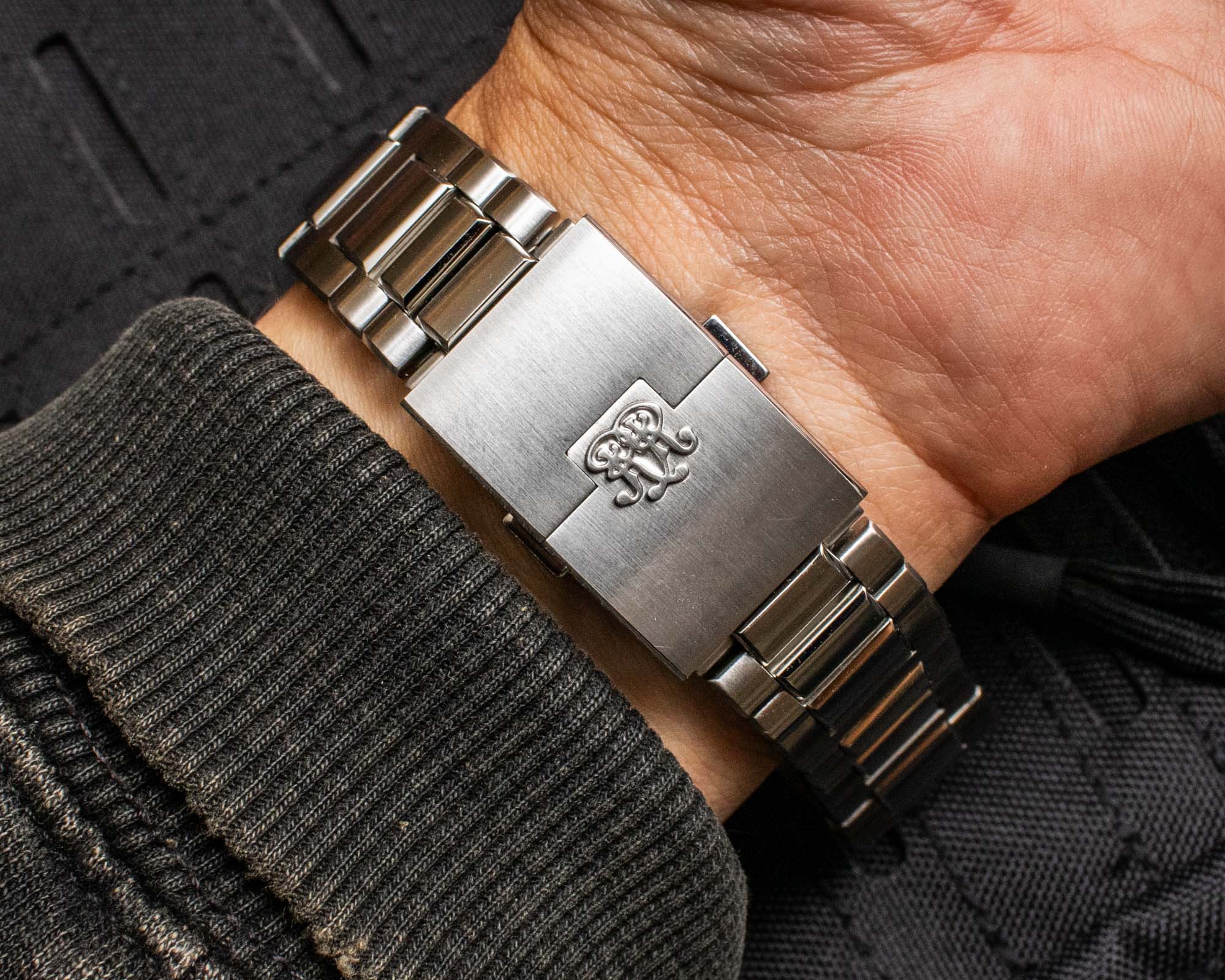
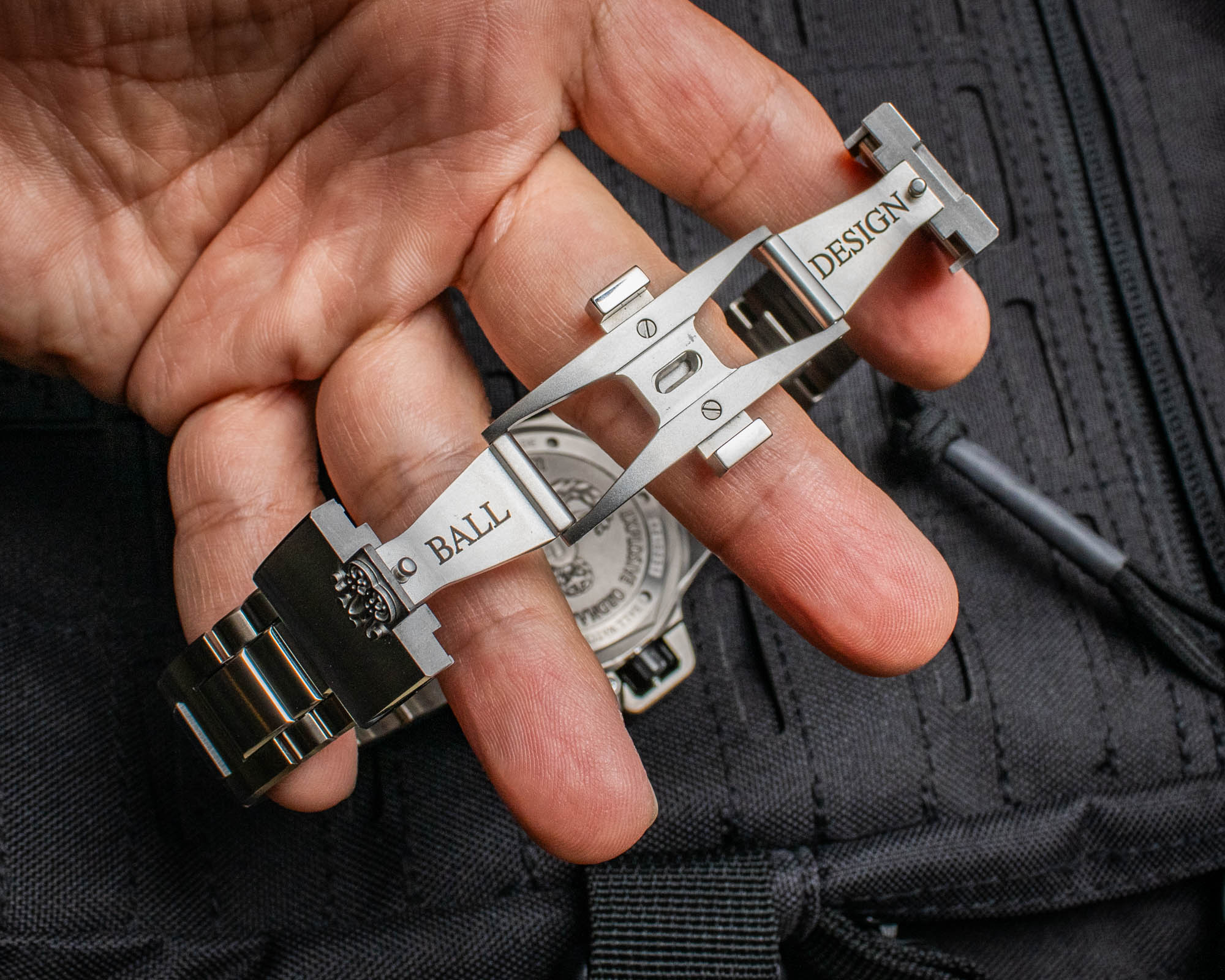
While the Ball Engineer Hydrocarbon EOD isn’t actually all that large of a watch, it does represent a fairly chunky presence on the wrist. Part of this is simply due to its overall thickness, although the bezel is also quite big relative to the size of the middle case, and this ultimately makes the Engineer Hydrocarbon EOD wear slightly larger than its on-paper specs might otherwise suggest. Although the overall package isn’t exactly lightweight, the use of titanium does help to keep the weight down, and despite being the most durable mechanical watch that Ball has ever put forward, the new Engineer Hydrocarbon EOD isn’t actually all that much larger than many of the brand’s other purpose-built tool watches. Realistically speaking, there are a number of brands that produce models with similar overall dimensions, which don’t offer nearly the same resistance to impacts or magnetism, and it’s fairly easy to forgive the Ball Engineer Hydrocarbon EOD for its slightly chunky proportions when you consider that you are getting one of the most durable mechanical watches that is currently available.
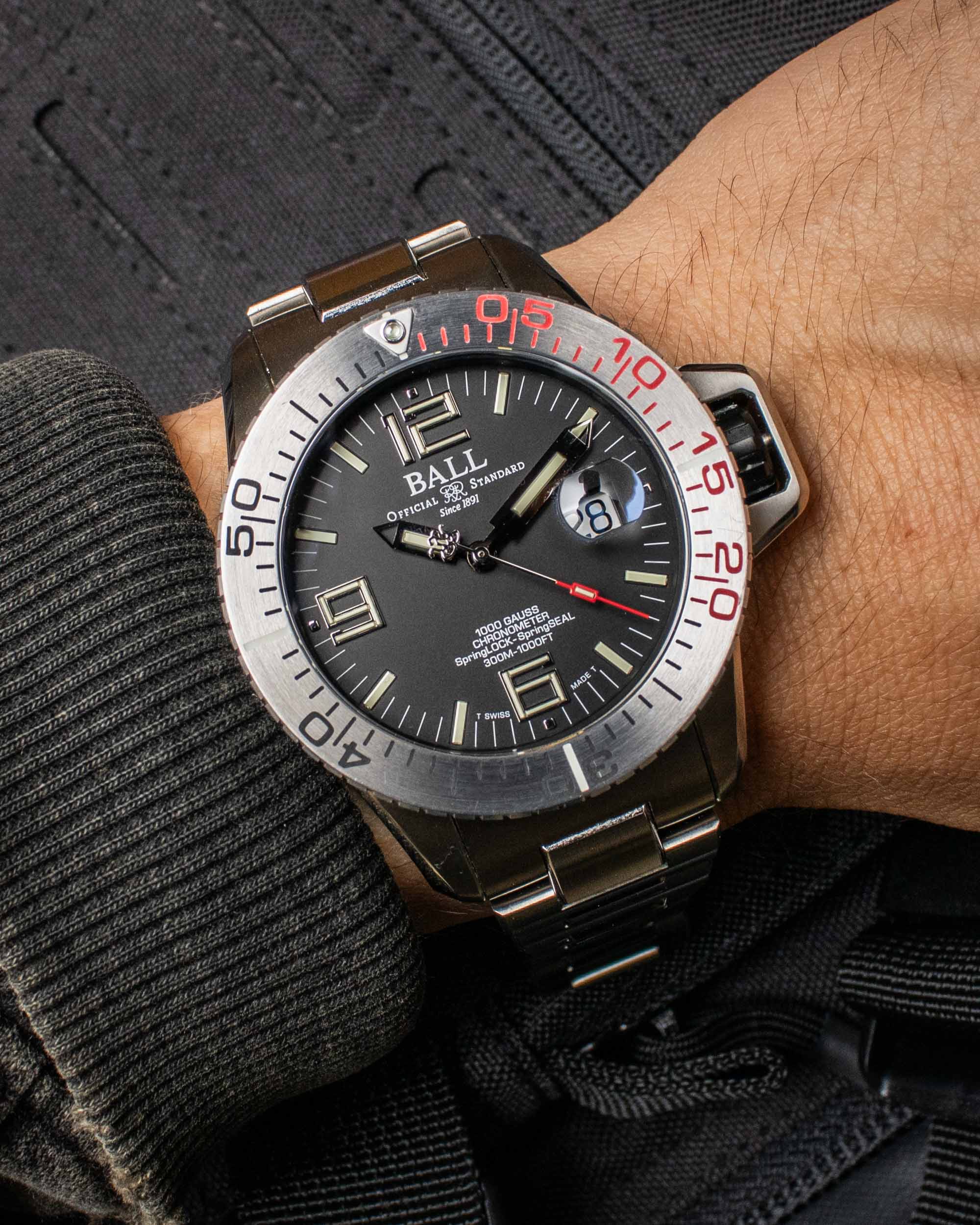
Although the Ball Engineer Hydrocarbon EOD is an ideal watch for someone who wants an ultra-rugged mechanical timepiece, the key word here is “mechanical,” and individuals who require the highest possible levels of impact resistance will still be best served by a watch with quartz movement. Mechanical calibers are inherently more fragile than their quartz siblings, and while this makes the specs of the Engineer Hydrocarbon EOD all the more impressive, something like a G-Shock is still going to be the top option when it comes to maximum durability. Additionally, despite its impressive capabilities and use of titanium, the Ball Engineer Hydrocarbon EOD costs roughly the same as other three-handed models from the current collection, and it is accompanied by an official retail price of $3,349 USD for the version with a steel bezel or $3,899 USD for the configuration that is fitted with a black ceramic insert. Most people will never need more than 100 meters of water resistance; however, a strong impact can occur by simply tripping or knocking your watch off a table, and shock resistance is something that benefits all watch owners, regardless of whether they are active-duty military personnel or simply plan on hammering tent stakes and chopping wood around the campsite. For more information on the Ball Engineer Hydrocarbon EOD, please visit the brand’s website.

